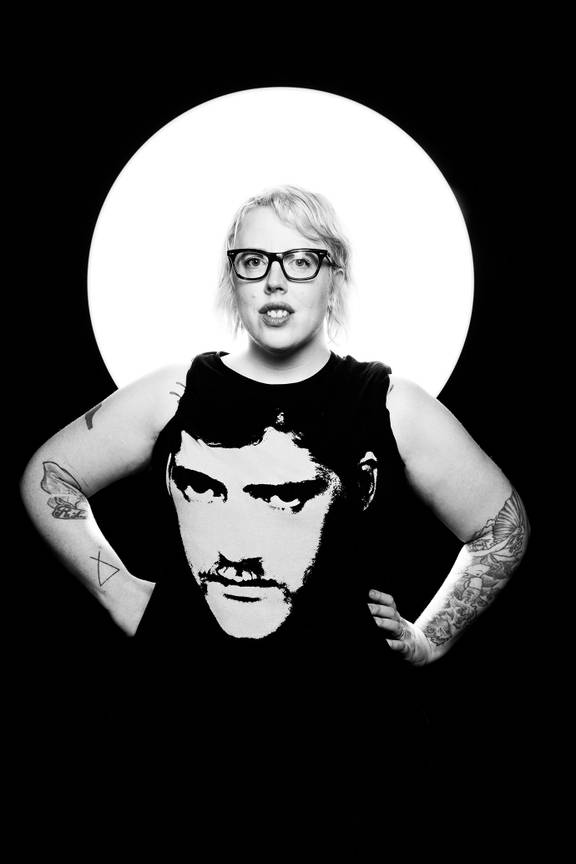Marea Stamper alias The Black Madonna has become a role model in the international rave and house scene. She's spinning the black circle at C12 this week.

The Black Madonna: riot grrrl behind the turntable
During her time at high school in Kentucky, she looked about the same as she does now: short dyed hair, androgynous clothes, just younger. At 41, Marea Stamper alias The Black Madonna may have become a charismatic role model in the international rave and house scene, but her wonder years were terrible. “I wasn’t just bullied, I was tortured,” she said earlier this year in a candid interview with de Volkskrant.
She retreated into alternative music played by the local university radio station: Pixies, Ministry, and Siouxsie and the Banshees. While her classmates swooned over The Little Mermaid, she and her parents would watch horror films and Das Boot. “I felt alone, was an outsider from everything, but I actually wanted to be different and was probably a know-it-all who felt smarter than everybody else, with her damn films and stupid books.” Thank goodness there was a rave scene that embraced her colourful and rebellious character.
"Dance music needs some discomfort with its euphoria. Dance music needs salt in its wounds. Dance music needs women over the age of 40"
It started with a part-time job that involved spending the weekend traveling across America to sell cassette tapes of DJ sets at rave parties. That is how she was a front-row witness to a number of ground-breaking moments in American dance music. She helped to pay for her studies in Chicago doing odd jobs for music labels and clubs. She ran into the late house pioneer Frankie Knuckles at the Smartbar, and he encouraged her to play records herself. Since 2012, she has been doing that as The Black Madonna. “As a teenager, I had read an intriguing book about the theme,” she told the online DJ platform Resident Advisor. “I must already have sensed that there was a vacuum of femininity in dance music. Not that there are absolutely no female DJs and producers, but there just aren’t enough of them.”
In a strange way, with her connective DJ sets that blend euphoric disco tunes, Detroit techno, and Chicago house into a layered experience, she is grateful to the bullies of her youth. It is in part thanks to them that The Black Madonna has developed into who she is now: not only the first woman to be proclaimed DJ of the year by Mixmag (in 2016), but also the feminist who with an anti-establishment message and butterfly glasses champions the rights of other outsiders.
“Dance music needs riot grrrls,” has been her inspiring motto from the beginning. “Dance music needs some discomfort with its euphoria. Dance music needs salt in its wounds. Dance music needs women over the age of 40. Dance music needs breastfeeding DJs trying to get their kids to sleep before they have to play. Dance music needs cranky queers and teenagers who are really tired of this shit.” Her abhorrence of intolerance is contrasted with a playful DJ style that is anything but rigid. “As long as you play well, you don’t need to take your set too seriously. It’s fine for deejaying to be fun.”
Read more about: Muziek
Fijn dat je wil reageren. Wie reageert, gaat akkoord met onze huisregels. Hoe reageren via Disqus? Een woordje uitleg.